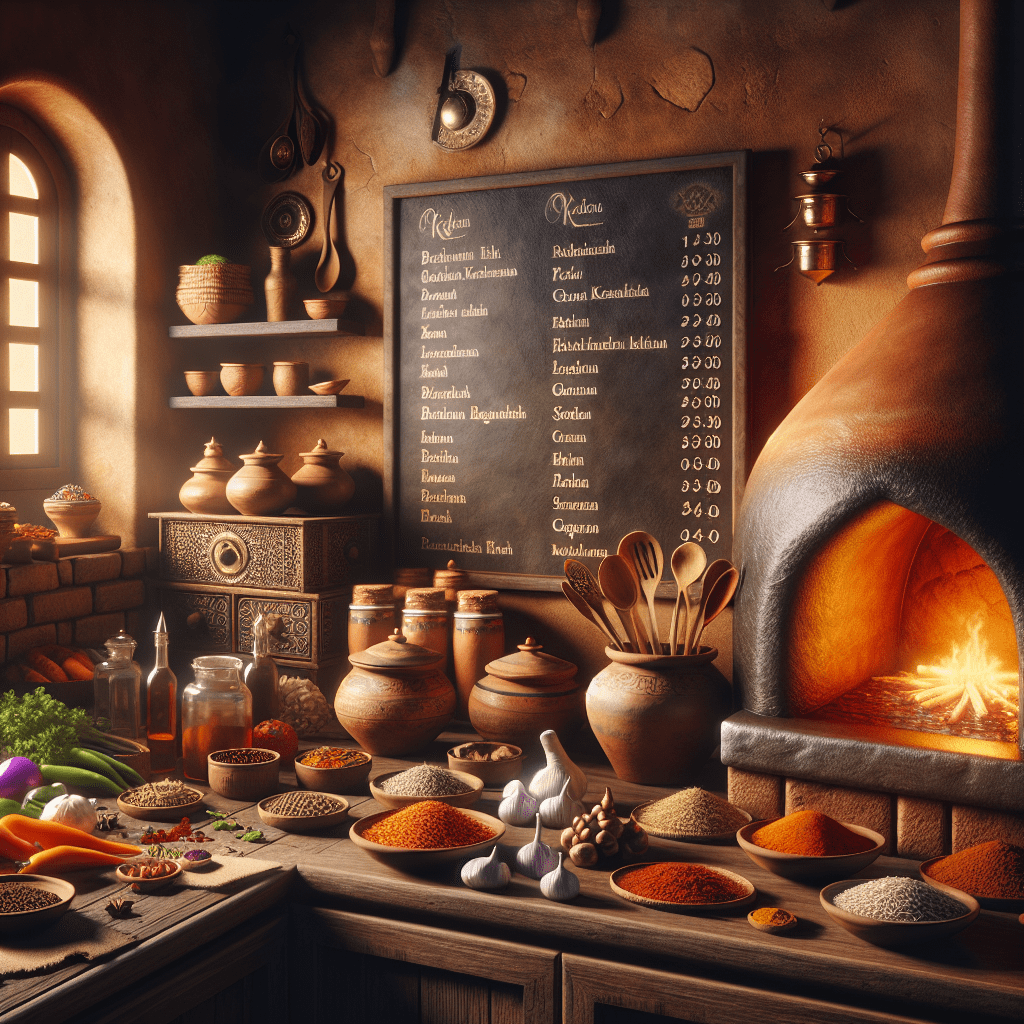Indian cuisine is renowned for its diverse flavors, aromatic spices, and vibrant colors. The Indian kitchen menu is a reflection of the country’s rich cultural heritage and culinary traditions. This blog post aims to provide a comprehensive overview of the Indian kitchen menu, exploring traditional dishes, regional cuisines, vegetarian and vegan options, health benefits, special occasion menus, global influence, and more.
Traditional Indian Dishes
Indian cuisine offers a wide range of flavorful dishes that are loved by people all over the world. From appetizers to desserts, here are some popular traditional Indian dishes:
- Appetizers: Samosa, Pakora, Aloo Tikki, Paneer Tikka.
- Main Courses: Butter Chicken, Biryani, Rogan Josh, Chole Bhature, Daal Makhani, Palak Paneer.
- Side Dishes: Naan Bread, Roti, Raita, Papadum.
- Desserts: Gulab Jamun, Kheer, Jalebi, Gajar Halwa.
Regional Indian Cuisines
India is a country with diverse regional cuisines, each offering a unique blend of flavors and ingredients. Here’s a glimpse into some of the regional Indian cuisines:
North Indian Cuisine
North Indian cuisine is known for its rich and creamy dishes. Popular dishes include Butter Chicken and Biryani. Key ingredients and flavors include dairy products like ghee and yogurt, as well as spices like cardamom and cinnamon.
South Indian Cuisine
South Indian cuisine is characterized by its use of rice, coconut, and spices. Popular dishes include Dosa and Idli. Key ingredients and flavors include curry leaves, tamarind, and coconut milk.
East Indian Cuisine
East Indian cuisine is influenced by neighboring countries like Bangladesh and Myanmar. Popular dishes include Machher Jhol and Sandesh. Key ingredients and flavors include mustard oil, fish, and sweets made from milk.
West Indian Cuisine
West Indian cuisine is known for its spicy and flavorful dishes. Popular dishes include Vada Pav and Dhokla. Key ingredients and flavors include coconut, peanuts, and spices like cumin and coriander.
Vegetarian and Vegan Options
Vegetarianism holds great importance in Indian culture, and as a result, Indian cuisine offers a plethora of vegetarian and vegan options. Some popular dishes include Paneer Tikka Masala and Vegetable Biryani for vegetarians, and Baingan Bharta and Aloo Gobi for vegans.
Importance of Vegetarianism in Indian Culture
In Indian culture, vegetarianism is often associated with religious beliefs and the concept of ahimsa (non-violence). Many Indians follow a vegetarian diet as a way of showing respect for all living beings.
Vegan Dishes in Indian Cuisine
Vegan dishes in Indian cuisine make use of plant-based ingredients and exclude any dairy products. Some popular vegan dishes include Masoor Dal and Aloo Gobi.
Health Benefits of Indian Kitchen Menu
Indian cuisine is not only delicious but also offers several health benefits. The use of spices and herbs, lentils and legumes, and fresh vegetables and fruits contribute to the nutritious nature of Indian dishes.
Utilization of Spices and Herbs
Spices and herbs are an integral part of Indian cooking. They not only add flavor but also have numerous health benefits. Turmeric, for example, is known for its anti-inflammatory properties, while cumin aids digestion. Other commonly used spices include ginger and garlic.
Use of Lentils and Legumes
Lentils and legumes are a staple in Indian cuisine and provide a good source of protein, fiber, and essential nutrients. Dishes like Daal Makhani and Chole Bhature showcase the versatility of lentils and legumes.
Incorporation of Fresh Vegetables and Fruits
Indian dishes often incorporate a variety of fresh vegetables and fruits, providing essential vitamins, minerals, and antioxidants. Popular vegetable-based dishes include Palak Paneer and Aloo Gobi, while desserts like Gajar Halwa feature fruits like carrots.
Indian Kitchen Menu for Special Occasions
Indian festivals and special occasions are incomplete without traditional and festive dishes. Here are some examples:
Indian Festivals and Their Associated Dishes
Diwali, the Festival of Lights, is celebrated with sweets like Gulab Jamun and savory snacks like Samosa. Holi, the Festival of Colors, is marked by the consumption of sweets like Jalebi and savory dishes like Pakora. Eid, a Muslim festival, is celebrated with dishes like Biryani and Kheer.
Wedding Feasts and Traditional Dishes
Indian weddings are known for their elaborate feasts featuring a wide variety of dishes. Some traditional dishes served at weddings include Biryani, Malpua, and Shahi Paneer.
Indian Kitchen Menu and Global Influence
Indian cuisine has gained popularity worldwide, leading to the establishment of Indian restaurants in various countries. Additionally, Indian flavors have been incorporated into fusion cuisine, and Indian street food has become a global phenomenon.
Indian Restaurants Worldwide
Indian restaurants can be found in almost every major city around the globe, serving authentic Indian dishes to locals and tourists alike. These restaurants play a significant role in promoting Indian culture and cuisine.
Fusion Cuisine Incorporating Indian Flavors
Indian flavors have been successfully integrated into fusion cuisine, creating unique and exciting dishes. The combination of Indian spices with other culinary traditions results in a delightful culinary experience.
Popularity of Indian Street Food
Indian street food has gained immense popularity worldwide, with dishes like Pani Puri and Vada Pav becoming favorites among food enthusiasts. The vibrant flavors and affordable prices make Indian street food a hit.
Conclusion
The Indian kitchen menu is a treasure trove of flavors, colors, and aromas. From traditional dishes to regional cuisines, vegetarian and vegan options, health benefits, special occasion menus, and global influence, Indian cuisine offers something for everyone. We encourage you to explore and try the diverse dishes of the Indian kitchen menu, immersing yourself in the rich culinary heritage of India.

